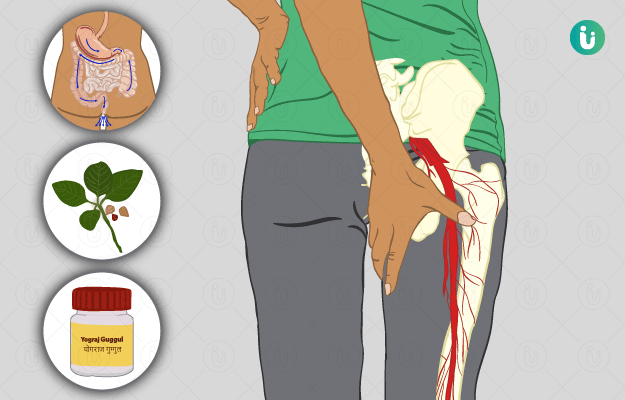The human spine comprises 33 vertebral bones which are stacked one on top of the other. The spine is divided into five regions: cervical, thoracic, lumbar, sacral and coccyx. The lumbar, sacrum and coccyx combine to form the lower back.
The sciatic nerve is the largest nerve in the human body. It is formed by the combination of five nerve roots that originate from the lower part of the spine. The sciatic nerve passes deep inside the buttock and travels down through the back of the thigh all the way to the heel and sole of the foot.
Any irritation of the sciatic nerve leads to sharp pain, tingling sensation and weakness in the lower back and the back of the leg. This pain is medically known as sciatica.
The pain in sciatica can be described as an electric shock-like sharp shooting pain. People may also complain of burning pain in one of the legs.
One of the major causes of sciatic nerve injury is disc herniation or slipped disc. The vertebrae in our spine consist of two rings each - the central ring contains nuclear tissue and outer ring, called the annulus, is soft to reduce friction and provide cushioning. When a lot of pressure is put on the nuclear tissue (like when you lift a very heavy weight), it can cause the annulus to rupture. This is known as a ruptured or herniated disk. This can create pressure against one or more of the spinal nerves which can cause pain, weakness or numbness in the affected nerve.
There are other reasons like genetic factors, vitamin deficiency and inflammation which can cause sciatic nerve pain. There are certain exercises like press-up exercise, straight leg raise, bridging exercise and hamstring stretch exercise which can help relieve the sciatica pain.
Read more: Ayurvedic medicines, treatment, remedies for sciatica















